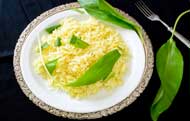





1. Lime Facts
2. Types of Limes
3. Nutritional Value of Limes
4. Health Benefits of Limes
A lime is the fruit of several species of citrus, most of which are hybrids within the genus Citrus (family Rutaceae). Limes are generally small, round to oval fruits with green flesh and skin and a distinctly sour taste due to their high citric acid content. They are widely cultivated in tropical and subtropical regions for culinary, medicinal, and ornamental purposes.
The term "lime" is used for a variety of citrus fruits, including the Key lime (Citrus × aurantiifolia), Persian lime (Citrus × latifolia), Makrut lime (Citrus hystrix), finger lime (Citrus australasica), blood lime (hybrid), and desert lime among others.
History and Origin
Limes originated in Southeast Asia and India, possibly in modern-day Indonesia or Malaysia. They were spread by trade to the Middle East, and then to Europe by the Crusaders. Spanish and Portuguese explorers brought them to the Americas in the 16th century.
- • Tahitian Lime
- • Australian Finger Lime
The two main types of limes grown and sold in Australia are the common Tahitian lime and the native Australian finger lime. The Tahitian lime is the most commercially produced and widely available variety, known for its classic flavory and seedless fruit. Australian finger limes are a native species with increasing niche popularity for their unique juice vesicles and are mainly grown along the east coast, with various cultivars available.
Common Limes
Tahitian Lime (Citrus latifolia) - This is the most widely grown and sold lime variety in Australia.
They have a classic lime flavour and are often seedless.
Harvested green, they turn yellow as they ripen, becoming juicier and sweeter.
Trees are relatively easy to grow in most climates and are suitable for home gardens, with both standard and dwarf varieties available.
Native Limes
Australian Finger Lime (Citrus australica) - A unique native species with caviar-like pearls of juice inside.
Mainly grown in New South Wales and Queensland.
Experiences increasing consumer interest for its novel use in food and beverages.
Cultivars:
Pink Ice: Produces pink fruit and a ruby grapefruit-like aroma.
Alstonville: Has dark green-black fruit with pale green flesh.
Other Varieties
CSIRO-bred varieties: The CSIRO has developed several native-hybrid varieties:
Australian Blood: A hybrid with blood-red rind, flesh, and juice.
Australian Sunrise: A hybrid with a yellow rind and pear-shaped, orange fruit.
Australian Outback: A variety with small, juicy green fruits that ripen around Christmas.
Rangpur Lime: A cold-tolerant hybrid of a mandarin and a lemon with acidic, seedy fruit that can range from pale green to reddish orange.
Native species: Australia is home to several native lime species, though they are less commonly sold commercially. Examples include the Russell River Lime (Citrus inodora), and the Round Lime (Citrus australis).
Fruit ” Lime ” ( Nutritional value )
Nutritional value per 100 g
Limes, raw
|
Nutrient ( Proximate’s )
|
Unit
|
Value
|
Daily Value %
|
|
Energy
|
kcal
|
30
|
1.5%
|
|
Protein
|
g
|
0.70
|
1.4%
|
|
Total lipid (fat)
|
g
|
0.20
|
0.2%
|
|
Carbohydrate, by difference
|
g
|
10.54
|
3.8%
|
|
Fiber, total dietary
|
g
|
2.8
|
10%
|
|
Sugars, total
|
g
|
1.69
|
|
|
Minerals
|
|||
|
Calcium, Ca
|
mg
|
33
|
2.5%
|
|
Iron, Fe
|
mg
|
0.60
|
3.3%
|
|
Magnesium, Mg
|
mg
|
6
|
1.4%
|
|
Phosphorus, P
|
mg
|
18
|
1.4%
|
|
Potassium, K
|
mg
|
102
|
2.1%
|
|
Sodium, Na
|
mg
|
2
|
0.08%
|
|
Zinc, Zn
|
mg
|
0.11
|
1%
|
|
Copper, Cu
|
mg
|
0.065
|
7.2%
|
|
Manganese, Mn
|
mg
|
0.008
|
0.3%
|
|
Selenium, Se
|
mcg
|
0.4
|
0.7%
|
|
Vitamins
|
|||
|
Vitamin C, total ascorbic acid
|
mg
|
29.1
|
32.3%
|
|
Thiamin (B-1)
|
mg
|
0.030
|
2.5%
|
|
Riboflavin (B-2)
|
mg
|
0.020
|
1.5%
|
|
Niacin (B-3)
|
mg
|
0.200
|
1.2%
|
|
Pantothenic acid (B-5)
|
mg
|
0.217
|
4.3%
|
|
Vitamin B-6
|
mg
|
0.043
|
2.5%
|
|
Vitamin B-12
|
mg
|
0.00
|
|
|
Folate DFE (dietary folate) (B-9)
|
mcg
|
8
|
2%
|
|
Vitamin A, RAE (retinol)
|
mcg
|
2
|
0.2%
|
|
Vitamin E (alpha-tocopherol)
|
mg
|
0.22
|
1.4%
|
|
Vitamin D (D2 + D3)
|
mcg
|
0
|
|
|
Vitamin K (phylloquinone)
|
mcg
|
0.6
|
0.5%
|
|
Lipids
|
|||
|
Saturated Fatty Acids
|
g
|
0.022
|
0.1%
|
|
Monounsaturated Fatty Acids
|
g
|
0.019
|
|
|
Polyunsaturated Fatty Acids
|
g
|
0.055
|
|
|
Trans Fatty Acids
|
g
|
0.000
|
|
|
Carotenoids
|
|||
|
Beta-Carotene
|
mcg
|
30
|
|
|
Lutein + zeaxanthin
|
mcg
|
0
|
|

|
Reference Values are based on a 2,000 Calorie Intake, for Adults and Children 4 or More Years of Age. Your daily values may be higher or lower depending on your calorie needs.
|
|
Percentages are roughly approximated using (RDA) Recommended Dietary Allowances for adults. Source: Nutrient Database – USDA (United States Department of Agriculture)
|
|
Reference Values for Nutrition – FDA U.S. Food and Drug Administration
|
Lime Nutritional Value
Limes offer health benefits such as boosting immunity, promoting heart health, aiding digestion, and improving skin. Their high vitamin C content helps protect cells from damage and supports the immune system, while antioxidants and other compounds can reduce inflammation. Limes also help with iron absorption, can prevent kidney stones, and have antimicrobial and antifungal properties.
- AIDS DIGESTION
Limes aid digestion by stimulating the production of digestive juices, which helps break down food more effectively. The acidity of lime juice can also help prevent constipation by stimulating bowel activity and softening stools when hydrated with water. Additionally, flavonoids in limes can improve digestion by stimulating the secretion of these digestive juices. - ENHANCES IRON ABSORPTION
Limes enhance iron absorption due to their high vitamin C content. The vitamin C in limes helps convert non-heme iron from plant-based foods into a form that the body can absorb more easily. Pairing limes or other vitamin C-rich foods with iron-rich meals can significantly increase the body's iron uptake. - SUPPORTS HEALTHY BODY PH
Limes support a healthy body pH because they are naturally acidic but become alkaline in the body after being metabolized. This is known as the "acid-alkaline paradox," where the high levels of alkaline-forming minerals like potassium and magnesium in limes can help buffer excess acids and maintain a balanced pH once digested. - IMPROVES SKIN HEALTH
Lime improves skin health by providing high levels of vitamin C for antioxidant protection and collagen production, while its natural citric acid helps to exfoliate and brighten the skin. Consuming limes or using products that contain lime essence can hydrate the skin, fight free radical damage, and help improve skin's overall appearance. However, applying lime directly to the skin can make it very sensitive to sunlight.

- SUPPORTS HEART HEALTH
Limes support heart health through several mechanisms: they are a good source of potassium and magnesium, which help lower blood pressure and improve circulation, and contain vitamin C and flavonoids, which have antioxidant properties that protect against artery damage and inflammation. These compounds can help reduce the risk of heart attack and stroke. - HAS ANTIMICROBIAL AND ANTI-INFLAMMATORY PROPERTIES
Limes have antimicrobial and anti-inflammatory properties due to their rich content of antioxidants, flavonoids, and other phytochemicals. Studies have shown that lime extracts can inhibit the growth of certain bacteria and reduce inflammation. The anti-inflammatory effects may also be linked to the high Vitamin C content, which supports immune function, and the potential of compounds in lime to help reduce cellular damage and inflammation. - MAY PREVENT KIDNEY STONES
The more urine you make, and that's a product of how much you ingest in terms of clear fluid, the less likely you will be to make a stone. Drinking beverages high in citric acid, such as lemon juice and lime juice, can be beneficial to kidney stone patients. - BOOSTS IMMUNE FUNCTION
Limes boost immune function primarily through their high vitamin C content, which helps increase the production of white blood cells to fight infection. They also contain antioxidants and flavonoids that reduce inflammation and protect cells from damage, and the vitamin C may help shorten the duration of a cold.
References
Nutrient Database – USDA (United States Department of Agriculture)
Reference Values for Nutrition – FDA U.S. Food and Drug Administration
Boosts immune function - Limes boost immune function primarily through their high vitamin C content, which helps increase the production of white blood cells to fight infection. They also contain antioxidants and flavonoids that reduce inflammation and protect cells from damage, and the vitamin C may help shorten the duration of a cold.
Supports heart health - Limes support heart health through several mechanisms: they are a good source of potassium and magnesium, which help lower blood pressure and improve circulation, and contain vitamin C and flavonoids, which have antioxidant properties that protect against artery damage and inflammation. These compounds can help reduce the risk of heart attack and stroke.
Aids digestion - Limes aid digestion by stimulating the production of digestive juices, which helps break down food more effectively. The acidity of lime juice can also help prevent constipation by stimulating bowel activity and softening stools when hydrated with water. Additionally, flavonoids in limes can improve digestion by stimulating the secretion of these digestive juices.
Improves skin health - Lime improves skin health by providing high levels of vitamin C for antioxidant protection and collagen production, while its natural citric acid helps to exfoliate and brighten the skin. Consuming limes or using products that contain lime essence can hydrate the skin, fight free radical damage, and help improve skin's overall appearance. However, applying lime directly to the skin can make it very sensitive to sunlight.
Enhances iron absorption - Yes, the statement is true: limes enhance iron absorption due to their high vitamin C content. The vitamin C in limes helps convert non-heme iron from plant-based foods into a form that the body can absorb more easily. Pairing limes or other vitamin C-rich foods with iron-rich meals can significantly increase the body's iron uptake.
Has antimicrobial and anti-inflammatory properties - Yes, limes have antimicrobial and anti-inflammatory properties due to their rich content of antioxidants, flavonoids, and other phytochemicals. Studies have shown that lime extracts can inhibit the growth of certain bacteria and reduce inflammation. The anti-inflammatory effects may also be linked to the high Vitamin C content, which supports immune function, and the potential of compounds in lime to help reduce cellular damage and inflammation.
May prevent kidney stones - The more urine you make, and that's a product of how much you ingest in terms of clear fluid, the less likely you will be to make a stone. Drinking beverages high in citric acid, such as lemon juice and lime juice, can be beneficial to kidney stone patients.
Supports healthy body pH - Limes support a healthy body pH because they are naturally acidic but become alkaline in the body after being metabolized. This is known as the "acid-alkaline paradox," where the high levels of alkaline-forming minerals like potassium and magnesium in limes can help buffer excess acids and maintain a balanced pH once digested.
